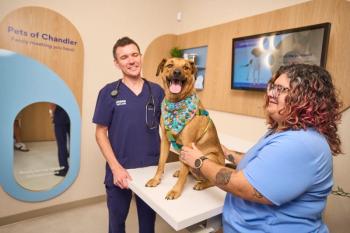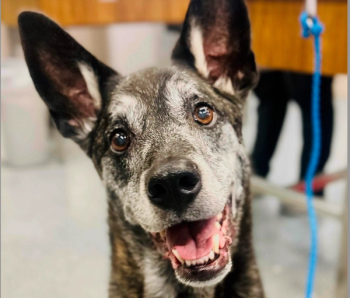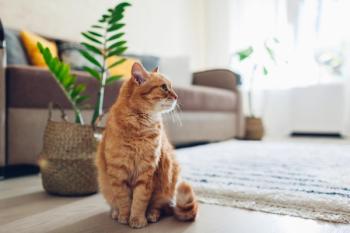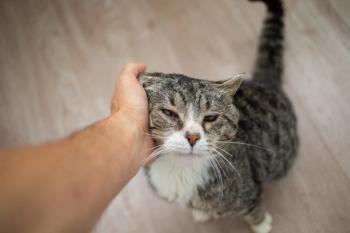
Physical Activity Patterns and Degenerative Joint Disease in Cats
Physical activity patterns differ between cats with and without degenerative joint disease (DJD).
A novel use of functional data analysis in cats demonstrated differences in activity patterns between cats without DJD and cats with DJD, according to a study recently published in PLoS One.
Accelerometers (activity monitors) are commonly used to measure spontaneous activity in dogs and cats, providing an objective evaluation of response to analgesic treatment for DJD and osteoarthritis (OA). However, current accelerometry analytical methods require compression of large data sets into single summary values (e.g., average per-minute counts of activity), leaving out key information on activity patterns.
Functional data analysis allows for activity pattern analysis. To date, though, functional data analysis has not been used to evaluate accelerometry data in veterinary medicine. Given the recent interest in using indoor cats as a model of spontaneous activity, the authors believed “a better understanding of activity patterns or profiles…will benefit both our ability to interpret the effects of DJD/OA on activity in cats, and the applicability of this naturally occurring model to translational research.”
The authors enrolled 15 cats without DJD and 83 cats with DJD; all were indoor-only cats. Each cat underwent full examinations (physical, neurologic, orthopedic) and were sedated for radiographs of each joint. Cats were given total pain (TPain) and total DJD (TDJD) scores using orthopedic examination and radiographic evaluation results, respectively.
Each cat wore an omni-directional activity monitor (Actical®) that was attached to a neck collar. The monitors, which the cats wore continuously throughout the study, collected minute-by-minute activity data (activity level and intensity). Data were then separated into weekdays (Monday—Friday) and weekends (Saturday–Sunday) and analyzed in several different ways:
- Within-group comparisons of weekday vs weekend activity
- Evaluation of age, body condition score (BCS), and TPain and TDJD scores on activity
- Between-group comparisons of activity
Normal cats were significantly younger than cats with DJD and had significantly lower TPain and TDJD scores. Median BCS was similar between groups.
The cats exhibited bimodal activity patterns. During the weekdays in both groups, there was a sharp peak of activity in the morning and a broad activity peak in the evening; approximate time frames of activity peaks were similar between groups (morning, 5—9 AM; evening, 4–11 PM). On the weekends, activity peaks were present yet less pronounced for both groups. Morning activity peaks also shifted to the right on the weekends.
Means of average activity levels and intensities were significantly different between weekdays and weekends for both groups. The authors attributed this difference to cat owner activity on the weekends. Cat owners may wake up later on the weekends and have less uniform time schedules, leading to later morning peak activity and less-pronounced peaks overall.
Older, normal cats were less likely to be active on weekday afternoons and weekend mornings. Older cats with DJD were less likely to be active during weekday and weekend activity peaks. Interestingly, cats with higher TPain scores were more likely to be active during weekday and weekend daytime hours.
Activity level and intensity were more variable in normal cats than in cats with DJD. The authors proposed that the cats with DJD decreased their spurts of high-intensity exercise to compensate for DJD-associated pain, leading to more muted peaks and dips in activity throughout the day.
Understanding spontaneous activity profiles in cats, the authors noted, “is critical to our ability to use activity as an effective objective outcome measure, both for monitoring an individual cat longitudinally, but also in response to a therapeutic intervention.”
Dr. Pendergrass received her doctorate in veterinary medicine from the Virginia-Maryland College of Veterinary Medicine. Following veterinary school, she completed a postdoctoral fellowship at Emory University’s Yerkes National Primate Research Center. Dr. Pendergrass is the founder and owner of JPen Communications, LLC.
Newsletter
From exam room tips to practice management insights, get trusted veterinary news delivered straight to your inbox—subscribe to dvm360.






